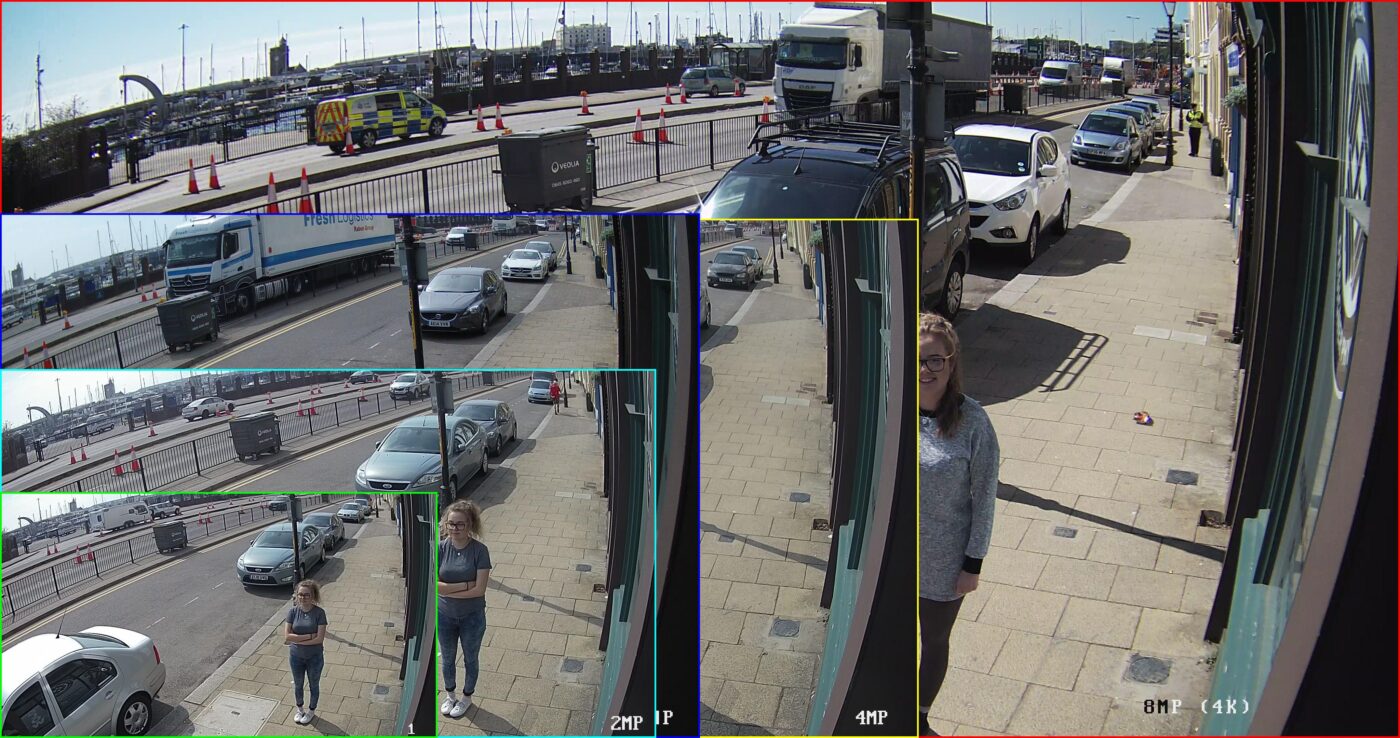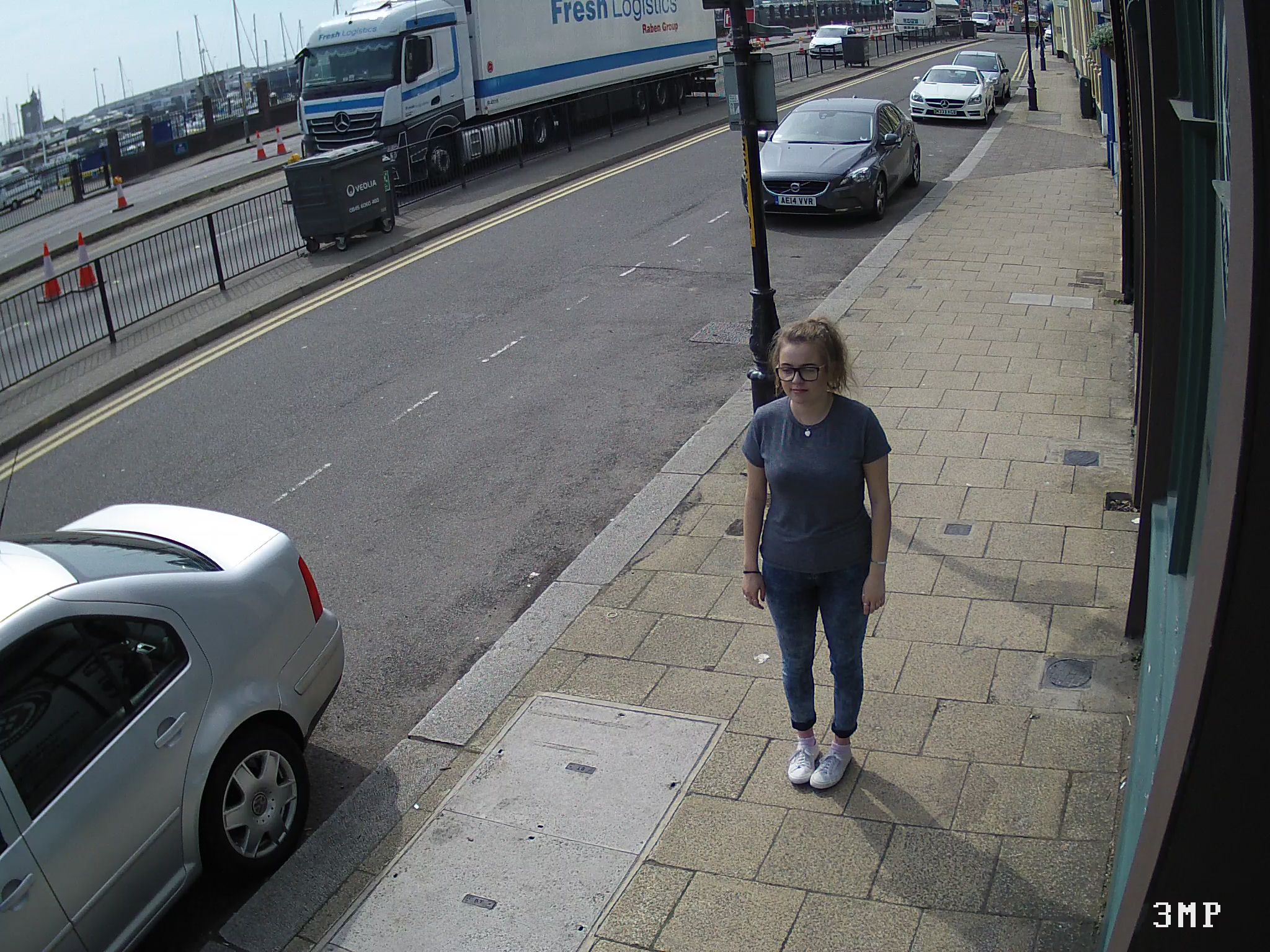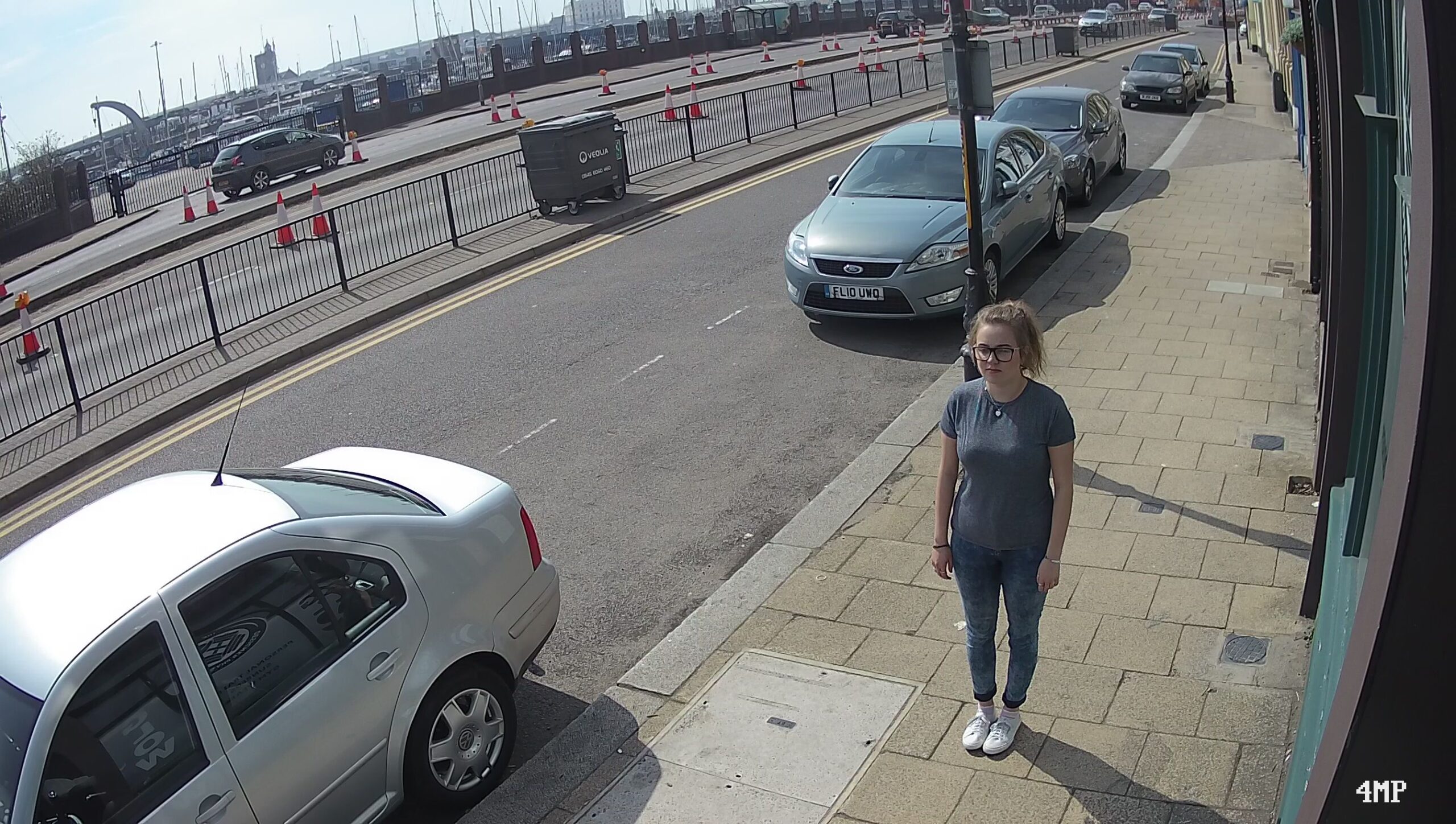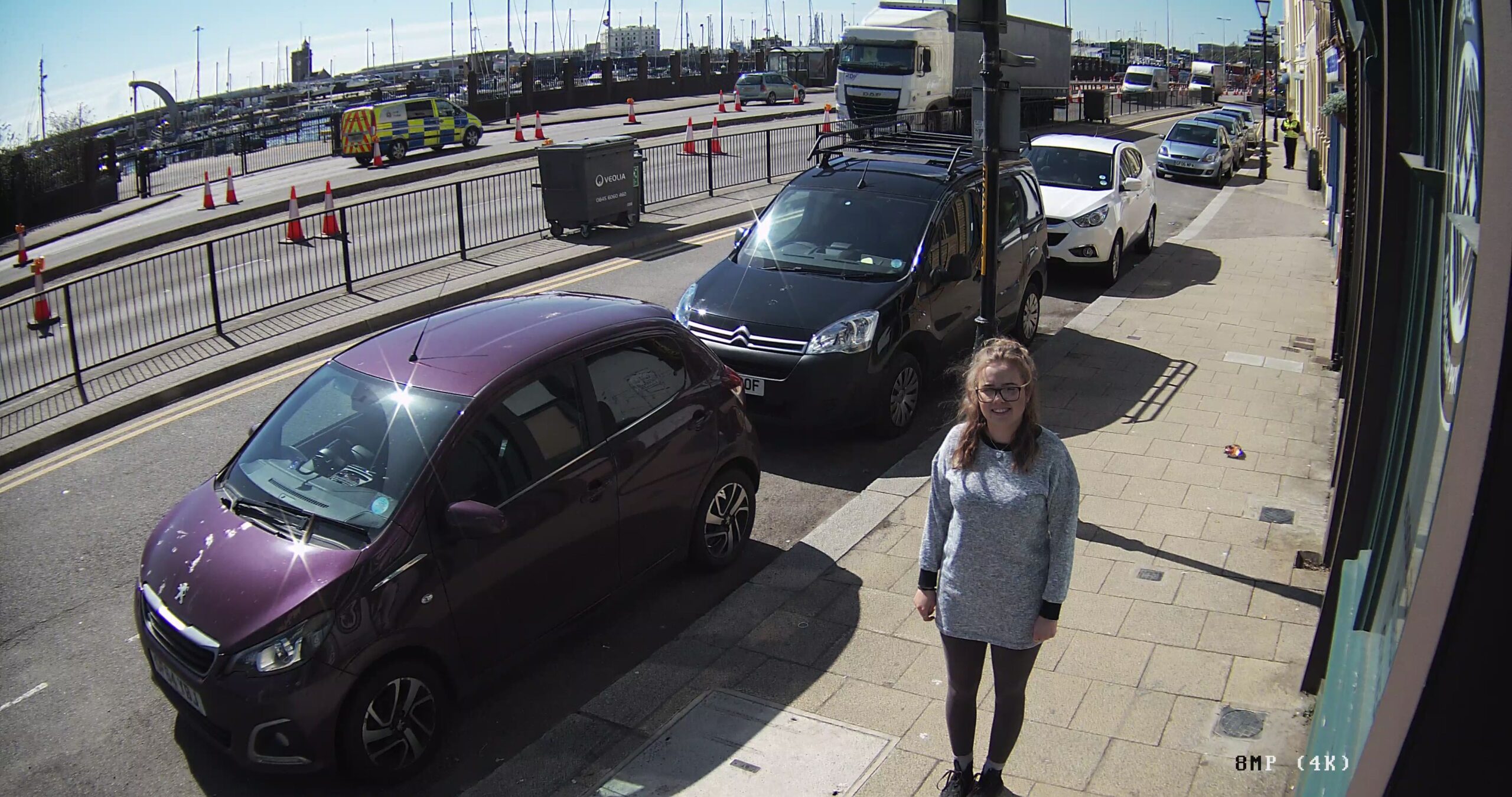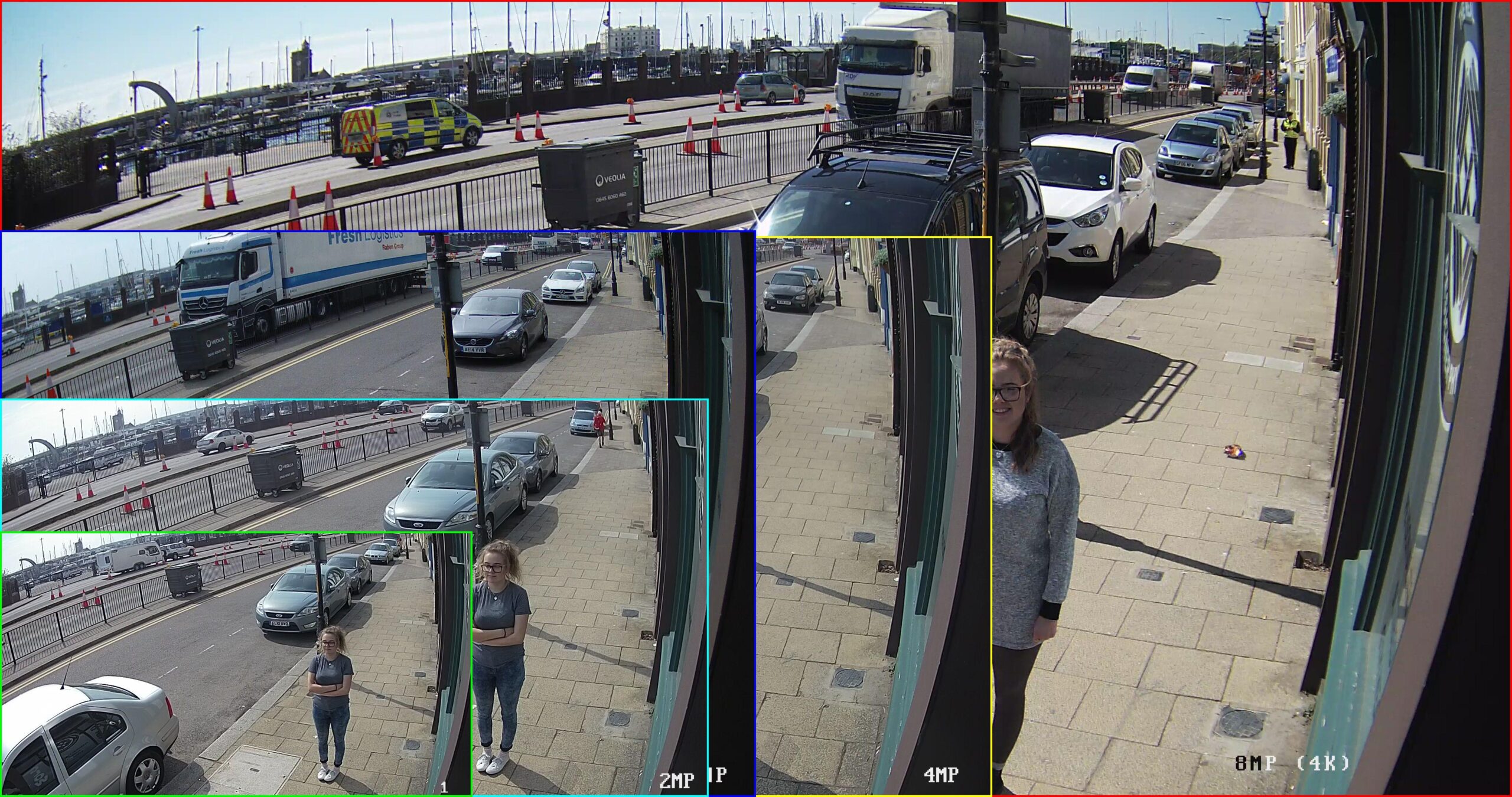Articles, Interesting Info
Differences in Camera Resolutions
Differences in Camera Resolutions
- The resolution of a camera is one of the most critical and desired features. The resolution of a camera is crucial for generating usable images capable of identifying individuals and license plates.
- Resolution is measured in pixels and abbreviated to Megapixels or MP. One megapixel (1MP) is equivalent to one million pixels.
We now prefer to start all of our conversations at 4MP, thanks to technological advances and subsequent price drops - The majority of the time, a higher resolution is preferable. There are a few drawbacks, though: a higher resolution video stream, for example, would require more storage and bandwidth headroom, and low-light output will usually suffer as a result.
Below is a list of common IP camera resolutions and their respective pixel Width x Height measurements based on a Hikvision camera. You may be familiar with certain resolutions when you consider your TV or PC monitors.
1MP = 1280 x 720 (AKA 720)
1.3MP = 1280 x 1024
2MP = 1920 x 1080 (AKA 1080)
3MP = 2048 x 1536
4MP = 2688 x 1520
6MP = 3072 x 2048
8MP = 3840 x 2160 (AKA 4K / UHD)
Many of our customers aren’t aware that a 4MP camera has significantly more pixels (more than double) than the 1080p TV and monitor they’re used to. This is exacerbated by the fact that most cameras can automatically resize their stream display to fit on a monitor that doesn’t support the camera’s resolution – for example, you wouldn’t be able to see the whole 2688 x 1520 stream on a monitor that only supports 1920 x 1080. Viewing the stream at its native resolution is almost always possible, but you’ll have to scroll around to see the whole picture because some of it will be off-screen. When zooming in on a faraway object of interest, the true advantage becomes apparent.
You can get an idea of the differences between resolutions via the images below.
1MP (1280 x 720) – DS-2CD2342WD-I 4mm focal length
2MP (1920 x 1080) – DS-2CD2342WD-I 4mm focal length
3MP (2048 x 1536) – DS-2CD2332-I 4mm focal length
4MP (2688 x 1520) – DS-2CD2342WD-I 4mm focal length
8MP (4096 x 2160) – DS-2CD4A85-IZS
Images Overlaid to Show Relative Size
1MP = Green
2MP = Cyan
3MP = Blue
4MP = Yellow
8MP = Red
1MP = Green
2MP = Cyan
3MP = Blue
4MP = Yellow
8MP = Red
When buying an IP camera, it’s also important to think about the focal length you’ll need. We created a similar article where you can learn more about focal lengths and the different viewing angles they provide.
It’s impossible to cover a large angle with a low resolution because an object of interest actually doesn’t have enough pixels to have functional identification (quite common on fisheye cameras, unfortunately). Picking a high-resolution camera to cover just the region you need is the best bet. This will show the largest and most accurate picture of what you’re looking at on your phone. A YouTube video illustrating the differences in focal lengths was recently released.
Previously, anything with a resolution greater than 0.4MP was only available from IP cameras. However, as previously described, technological advances have enabled the development of HD analog cameras with resolutions of up to 5MP (and, apparently, soon 4K!). Hikvision’s Turbo HD analog cameras, which use HD-TVI technology, are among our favorites; you can see them on our site.
With 4K expected to replace 1080p as the standard for TV and PC monitors in the coming years, it appears that 4K surveillance will become even more widespread in the coming years.
WHY CHOOSE IROYAL?
Checkout what our satisfied customers have been saying about us here!

